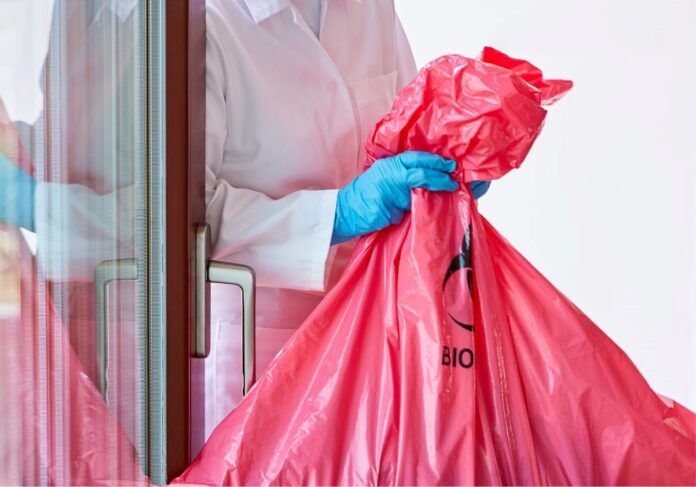The amount of waste that hospitals generate is substantial. Of the total amount of waste generated, about 85 percent is a general, non-hazardous waste. The remaining 15 percent is hazardous materials. Proper Medical Waste Disposal Services can help you get rid of these dangerous wastes easily.
Those are some hefty numbers. But every hospital doesn’t need to fall into the status quo. There are four effective ways to minimize hospital waste and turn the facility into a more sustainable environment.
Install Hand Dryers
Everyone wants their doctors, nurses, and other members of the health-care profession to have clean hands. And you can bet that inside these facilities, they’re constantly washing their hands. But once they’re clean, they need to dry them. And most often, they resort to paper towels.
Yes, paper towels are recyclable, but constantly using them to dry hands is still wasteful. Consider installing hand dryers in every hospital room. Paper towels can still be an option, but the hand dryers will minimize the number of paper towels that go in the trash can.
Color Code Waste Separation
You may be able to find an alternative for paper towels, but there are some items you will still need to throw out. When it’s time to discard those, it’s best to do it in an organized manner. Use small medical waste containers inside patient rooms and make them accessible to staff only.
Separate red bag waste containers from solid waste containers. Color code these containers to ensure appropriate separation of waste. Also, make sure the waste management teams dump trash in the proper bins at the end of the day. Dumpsters play a pivotal role in hospitals, so ensuring that waste goes into the right receptacles is essential.
Stock Up on Reusable Items
Using reusable products in place of single-use ones can keep a lot of items from entering the landfill. So you need to stock up. Check to see if products are reusable before purchasing them.
Use washable items in patient rooms as an alternative to paper ones. A lot of hospitals fear that these items won’t go through proper sanitization. If that’s the case, make sure the gowns and linens you purchase are recyclable so that centers can transform them into something else useful.
Conduct Monthly Waste Audits
It’s not possible to improve and fix a problem without knowing where the problem lies. Every hospital and health-care facility should conduct monthly waste audits. At the end of each month, see which areas in the facility generated the most waste.
With these audits, you’ll get a full view of the problems and solutions. These periodic spot checks will allow everyone to see if they dispose of waste correctly and if they’re following the plan. Share the findings with everyone on staff so that everyone can continue to improve.
Effectively minimizing hospital waste can happen in four easy steps. You only need to make sure everyone is on board.
Read Also
- The Benefits of Contract Labor Staffing in HealthcareThe most successful healthcare facilities today aren’t just reacting to crises—they are building workforce resilience to withstand them. Unpredictable patient demand, coupled with persistent nursing shortages, has made the traditional staffing model obsolete. Relying on mandatory overtime to cover a sudden surge in capacity is a recipe for high turnover and rising employee burnout relief… Read more: The Benefits of Contract Labor Staffing in Healthcare
- Management Reinforcement for Healthcare Providers in a Shifting SystemHealthcare is changing faster than ever. So, providers are feeling the pressure to keep up. New technology, changing patient needs, and constant rule updates make it tough for managers to stay on top. Strong leadership helps teams work better, give great care, and stay happy in their jobs. Here’s how healthcare leaders can strengthen their… Read more: Management Reinforcement for Healthcare Providers in a Shifting System
- Why Effective Disinfection Remains the Foundation of Public HealthFrom hospitals and schools to transport hubs and food production sites, disinfection is central to breaking the chain of infection and protecting community health. The COVID-19 pandemic highlighted how crucial surface hygiene and environmental control are in reducing the spread of harmful microorganisms. Yet, beyond emergency response, routine and validated disinfection practices remain the cornerstone… Read more: Why Effective Disinfection Remains the Foundation of Public Health
- How to Navigate Your Medical Assistant Career PathBecoming a medical assistant can feel both exciting and a little stressful. This job lets you work closely with doctors and other healthcare workers to help patients. But with so many different paths to take, it can be hard to know where to start or how to plan your career. Wouldn’t it be nice to… Read more: How to Navigate Your Medical Assistant Career Path
- Benefits of Enrolling in Botox Training CoursesMany people want to enhance their skills in the beauty field, and one way to do that is through Botox training. With the rising popularity of Botox, enrolling in training courses can set you on a path to a rewarding career. If you are considering this option, you might be curious about the benefits that… Read more: Benefits of Enrolling in Botox Training Courses
- How Pilates Certification Enhances Professional Growth in HealthcareAre you looking for a way to expand your skills and stand out in healthcare? Pilates certification can be a powerful step in your professional journey. It not only helps you understand movement and body mechanics. It also gives you tools to support patient recovery. It also improves mobility, and promotes wellness. Ready to see… Read more: How Pilates Certification Enhances Professional Growth in Healthcare







